The Indianapolis 500, or Indy 500 for short, initially started out as a tar and gravel track build for racing motorcycles as well as many other types of events in 1909. Located in Speedway, Indiana just northwest of downtown Indianapolis, sits the infamous 2.5 mile oval track. The first long distance endurance race was the 100-lap Prest-O-Lite Trophy in 1909, won by Bob Burman in a Buick. Initially the track was paved in asphalt but due to the harsh punishment that the track received that asphalt started to break up during some of the first endurance events causing major crashes that led to 2 fatalities.
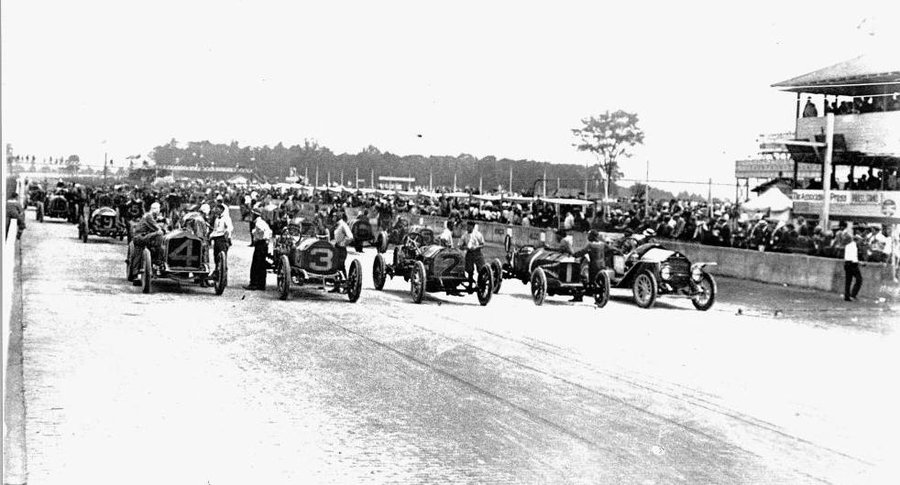
Starting Line of the 1911 Indy 500
PHOTO: NPR
But because these events brought so many paying spectators, as many as 40,000 people in attendance, the tracks primary owner decided to re-pave the surface with 3.2 million bricks at the end of the 1909 season. The event on Memorial Day 1910 however brought over 60,000 people to come out and see the newly paved circuit and watched as Ray Harroun won the 200 mile Wheeler-Schebler Trophy in a Marmon. But the events following saw less and less spectators so the owners knew they needed to do something special so they decided they were going to focus on a single race, they initially thought about doing a 24hr race similar to Le Mans, or making it an even 1,000 miles but later decided up on 500.

Indianapolis Speedway Aerial View
PHOTO: Indymotorspeedway
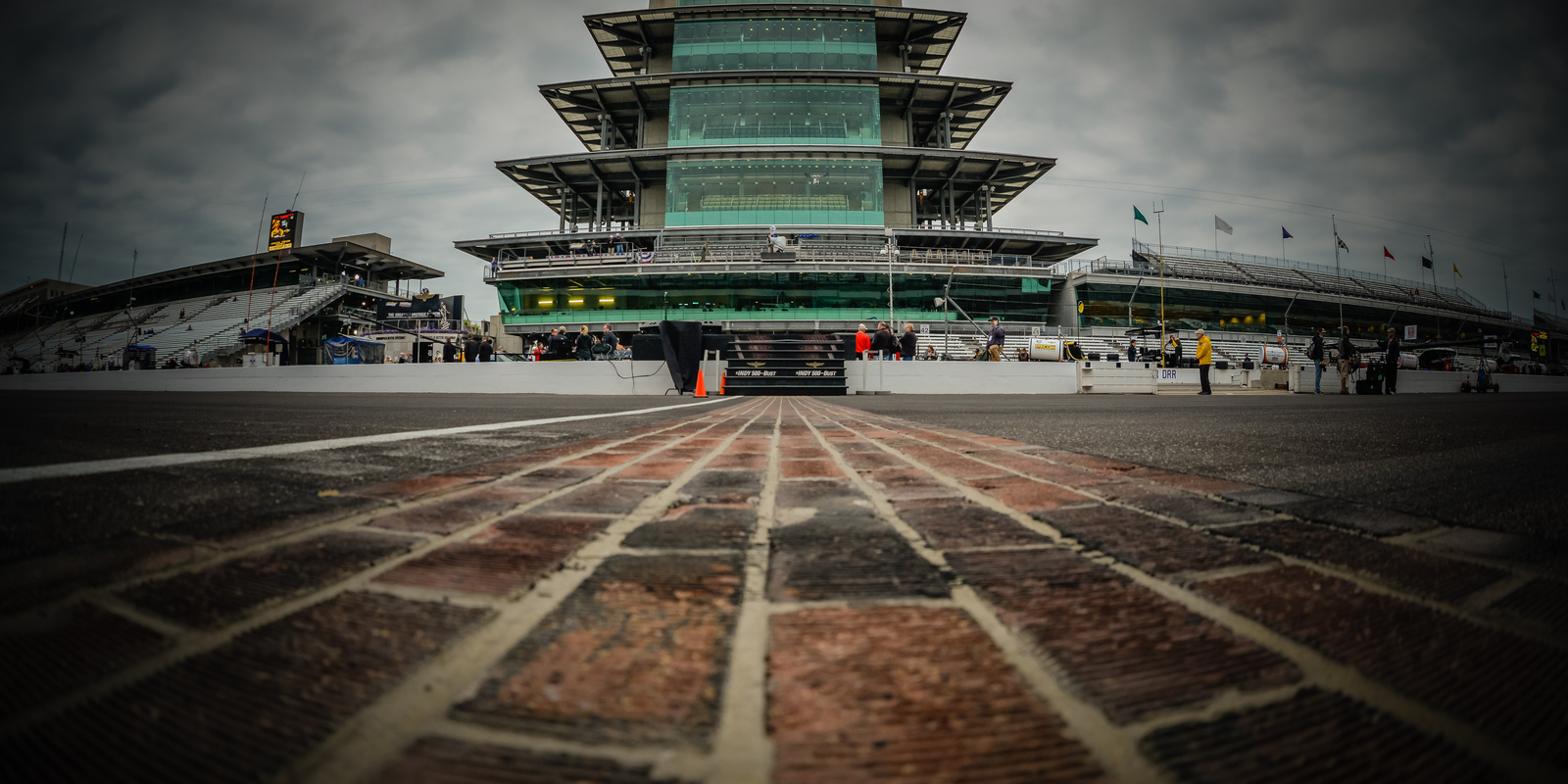
All that remains of the 3.2 million bricks that once paved the entire 2.5 mile track.
PHOTO: dailydsports
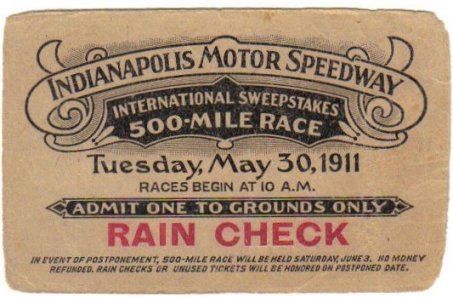
PHOTO: pinterest
The following year on Memorial Day May 30th, 1911 the first “Indy 500” as we know was ran on the 2.5 mile brick paved oval track. There were 40 racers on the starting grid all gunning for the win so they could take home the spectacular purse of $25,000. which of course was a substantial amount of money in 1911. Race organizers also added a maximum engine size requirement of 600 Cubic Inches (9.8L which is more than 4x the size of modern day Indy Cars).

1911 Indy 500 winner Marmon Wasp
PHOTO: ConceptCarz
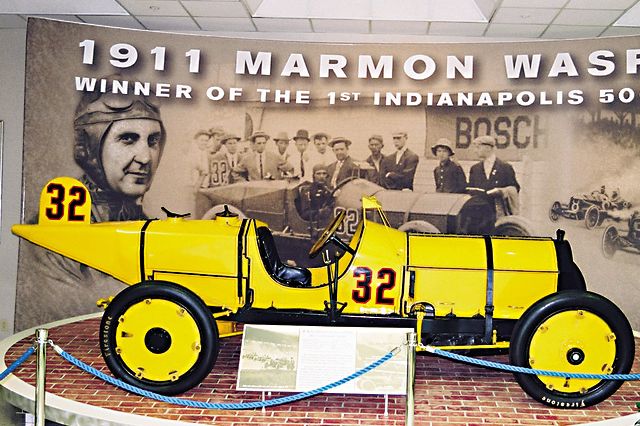
PHOTO: Superchevy
The race winner was Ray Harroun again in his Marmon Wasp and he averaged just under 75mph throughout the race and although he started back in 28th position he was able to work his way yp through he field to claim the overall victory. The win was officially protested by Ralph Mulford but was overruled. Harroun was the only driver to not have a mechanic riding on board that watched all the gauges and temperatures of the engine, as well as to inform the driver of oncoming traffic. Harroun was able to do this by himself using his new invention, the rear view mirror, that allowed him to see traffic coming from behind thus not needing a second person in the car.
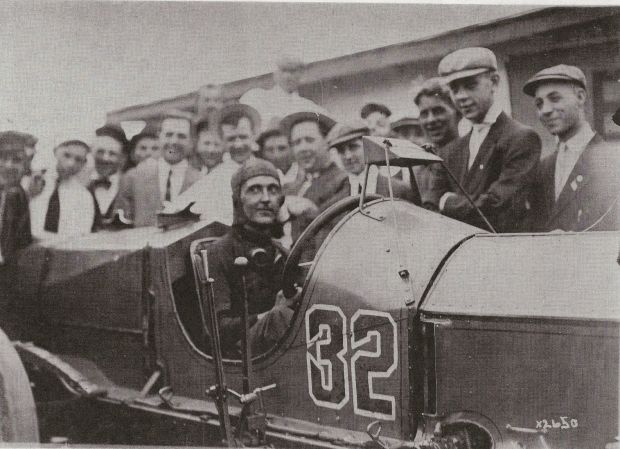
1911 Indy 500 winner Ray Harroun in his Marmon Wasp fitted with the first Rear View Mirror.
PHOTO: Maxim
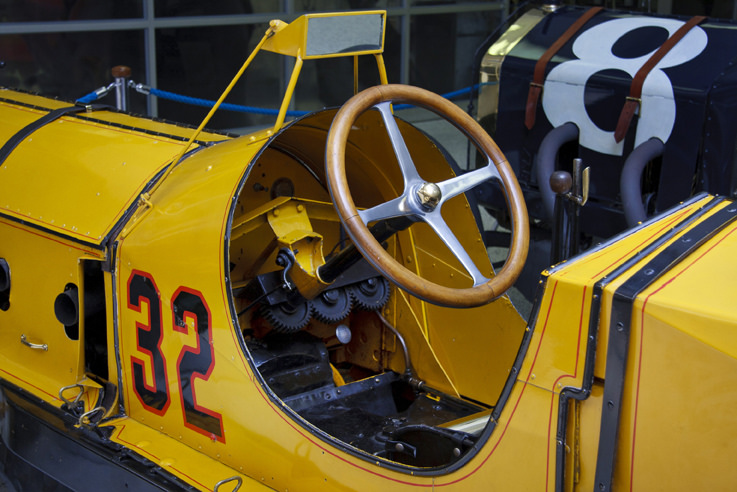
1911 Marmon Wasp Rear View Mirror
PHOTO: Flickr
